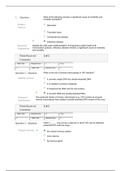Class notes
Rock Cycle Notes
- Course
- World geography
- Institution
- 9th Grade
This document is about the rock cycle. It goes through metamorphic rock, sedimentary, and igneous. It also goes in depth about the process that help form these rocks.
[Show more]





